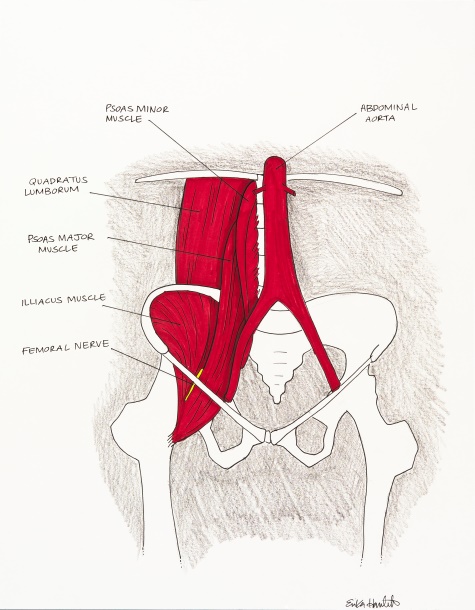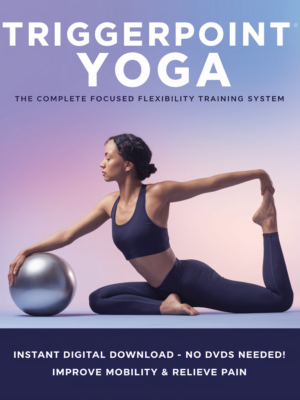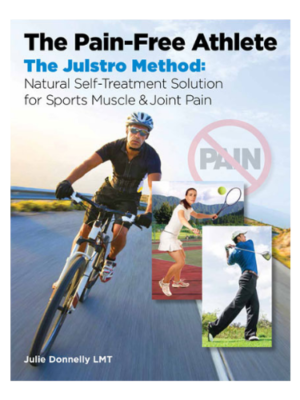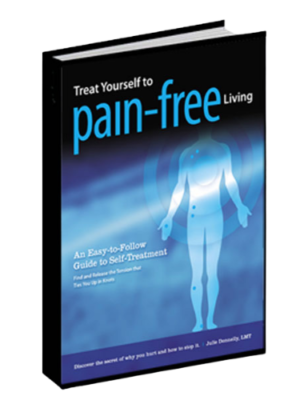Joint Pain – Lower Back Pain
Severe Lower Back Pain: Cause and Treatment
Severe lower back pain is one of the most common chronic pain conditions. One problem is people feel the severe pain in their low back, but that is rarely the source of pain. Repetitively straining the muscles that impact the pelvis can tighten muscles and put pressure on your low back.
Sitting is the #1 repetitive movement causing severe lower back pain. The muscle that lifts your leg up will also pull down on your pelvis. Bending forward is another key movement that causes low back pain. The only time the muscles that cause lower back pain aren’t tight is when you are standing straight and still.
Consider the movements you do every day, and you’ll see that these muscles are constantly in action. These can include: heavy lifting activities, housework, gardening, driving, and sitting at a desk. When you sit, the muscles shorten to bring you to the sitting position, and then stay that way. In fact, sleeping with your legs bent is a repetitive strain on the muscles that cause severe low back pain. This is a main reason your low back may hurt when you first wake up. Holding these muscles still for hours is a repetitive strain on the muscle fibers. Playing sports: skiing, golf, tennis, biking, swimming and throwing sports like baseball, all strain your muscles. The strain puts pressure on your joints and are a key factor in severe lower back pain.
The Julstro Method, with its clinically-based self-treatment techniques and tools, effectively relieves the tight muscles. Using a Julstro Total Treatment System, back pain sufferers can quickly treat themselves and return to normal activities and the sports they love.
Severe Lower Back Pain and Muscles

This can get confusing, but it’s interesting to understanding what is happening to cause lower back pain. The picture above is looking into your body from the front, removing all organs so you can see the spine.
The psoas muscle originates along the front side of your lumbar vertebrae. It goes down, crossing over your hip joint, and inserts into the top of your thigh bone. When it contracts you bend forward.
The problem comes from the fact that the psoas contracts many thousands of times every day. Unless we fold over backward, it never gets stretched. As the muscle is held contracted while sitting, a phenomenon called “muscle memory” causes it to shorten. The shorten muscle pulls on the vertebrae as you stand up, and severe pain is felt in the low back.
You automatically rub your low back, but the pain is actually coming from the muscle that is located on front of the spine, and behind your intestines.
A muscle in your lower back, the quadratus lumborum muscle, originates on the top of your posterior pelvis and inserts into your 12th rib. As your pelvis goes down in the front, it comes up in the back. This makes the quadratus lumborum muscle be too long to lift your hip so you can take a step. The body ties a knot (spasm) where your 12th rib and spine meet. This causes you severe lower back pain when you try to sit down.
The pain actually feels a bit better when you bend over because you are going into the contraction and taking the pressure off the lumbar vertebrae. But, when you stand up, the muscle is again pulling on the vertebrae: pulling the bone out of alignment. The movement compresses the disks; impinges the nerves; and you feel the tug of the muscle on the bone. The muscle definitely needs to be stretched.
How to Effectively Stretch the Muscles of Your Lower Back
We have found that the psoas muscle never gets stretched. The only way to stretch it is to keep your hips and legs completely straight and ONLY lean back at your waist. This is a very slight stretch. You aren’t looking to do a back-bend since you would need to move your pelvis and legs. You may have discomfort along your lumbar vertebrae and possibly across the top of your posterior pelvis. Only go to the point of a “feel good” stretch, not to the point of causing sharp pain. As soon as you feel the stretch go a tiny-bit further and then slowly stand up straight. Don’t hold yourself in the painful position. You will be able to go further each time you do it, and your back will feel better each time. You’ll be amazed at how quickly this helps low back pain.
To help yourself with positioning the first few times you do the psoas stretch, turn around at the sink. Put your calves up against the cabinet, and your hips resting against the counter. Keep your hips and calves gently touching the cabinet. Keep facing straight ahead, and lean back, moving your upper back over the sink.
Be aware to keep the pressure the same on your hips and calves. If you feel the pressure increasing you will know you are leaning back with your lower body. Also, check to make sure that your weight is evenly distributed on your feet and you aren’t leaning back onto your heels. It helps if you place your hands on your stomach and lift up your chest, stretching your abdominal muscles. This will raise the spine a bit before you lean back. Do this movement 10 times. On the last stretch bend forward, arching your back and moving your hips side to side.

Related Products
-
Focused Flexibility Kit
The Complete Focused Flexibility Training System (MP4 Digital Download)
$67.00 Add to cartRated 0 out of 5



